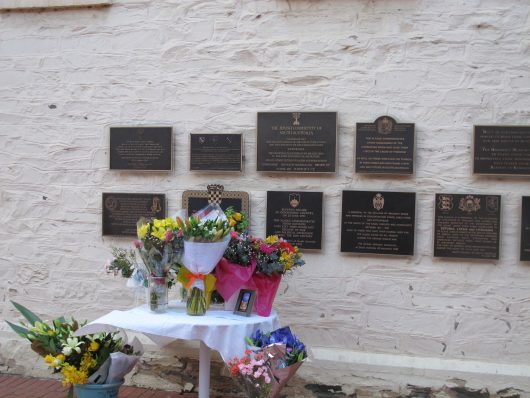10 Facts About the Bosnian Genocide
 The Bosnian Genocide shocked the world. Bosnia and Herzegovina declared its independence from the former Yugoslavia in the spring of 1992. A census taken at this time recorded a population of 4 million, with 44 percent Bosniaks (Bosnian Muslims), 31 percent Serbs (Bosnian Orthodox Christians), 17 percent Croats (Bosnian Catholics) and 8 percent Yugoslavian.
The Bosnian Genocide shocked the world. Bosnia and Herzegovina declared its independence from the former Yugoslavia in the spring of 1992. A census taken at this time recorded a population of 4 million, with 44 percent Bosniaks (Bosnian Muslims), 31 percent Serbs (Bosnian Orthodox Christians), 17 percent Croats (Bosnian Catholics) and 8 percent Yugoslavian.
Beyond the desire for independence, Bosnian Serbs wanted to forge a separate Serbian state within the bounds of this nation. This illegitimate state would be known as “Greater Serbia”. In order to attain this vision, the Serbs took brutal and violent action against both the Bosniaks and the Croats, with the intention to formally expel both ethnicities from the region they sought to control. The Serbs went so far as to displace, torture, rape and murder these two groups over the course of a three-year civil war—executing, at the war’s low point, what is known today as the Bosnian genocide. Here are 10 facts about the Bosnian genocide, and everything you should know about this atrocity.
Top Bosnian Genocide Facts:
- Before the breakup of the former Federal Republic of Yugoslavia, the Balkans were controlled by President Josip Broz Tito. Though many ethnic groups existed within his domain, he kept tensions at ease by dictating with an “Iron Fist” approach. He was described by many as a “benevolent dictator”; however, he left little room for cultural expression outside of Yugoslav nationalism. It was not until after his death in 1980 that this Yugoslav identity began to disperse into numerous ethnic factions.
- The intent of Serb brutality against the Bosniaks and the Croats during this civil war is termed “ethnic cleansing“. The Serbs’ motive was to remove a specific group from a geographical area, not for the sole purpose of ethnic destruction. This does not apply to the attack, or rather “shelling”, of Srebrenica in 1995, which was classified by the United Nations as a genocide in 2007.
- In 1993, the U.N. declared that three eastern Bosnian towns, Srebrenica, Zepa, and Gorazde would be safe havens, meaning that all three would be disarmed and under the protection of international peacekeepers.
- The Bosnian genocide refers to a low point of this civil war in July 1995, where the systemic extermination of a specific group of people did occur. In Srebrenica, one of the small mountain towns protected by the U.N. in Eastern Bosnia, Bosnian Serbs launched an invasion on July 11, overthrowing the Dutch peacekeeping forces meant to protect the region.
- Over the course of four days, 15,000 men were hunted by Serbian forces, ending in 8,000 men and boys being methodically killed and buried in hidden mass graves. Examination of these bodies after the fact showed signs of mutilation, as well as the binding of arms and feet prior to execution.
- During these same four days, an estimated 20,000 women and children were subject to forced evacuations out of their homes and sent to Serbian-controlled regions or camps where their Serbian aggressors used sexual violence as a weapon against them. Female victims of the Bosnian genocide varied in age, some being as young as 12 years old, and most have lived in silence regarding their experience over the past two decades.
- Over the course of three years, the civilian death toll reached 200,000. On top of this, another 2 million Bosnians were displaced from their homes and placed in dangerous environments.
- Despite its peacekeeping efforts, the international community has been criticized for its apathy towards the diabolical violence against the Bosniaks and Croats. However, in 1993 the U.N. Security Council set up an International Criminal Tribunal for the Former Yugoslavia. This was the first tribunal established since the Nuremberg Trials, and its intention was to prosecute the leaders of genocide, mass murder and the various other war crimes that occurred during the breakup of Yugoslavia.
- The leader of the Bosnian Serbs was a man named Radovan Karadzic, a native of Sarajevo. He was declared the president of the illegitimate nation Greater Serbia. Karadzic was found guilty by the U.N. for 10 out of 11 counts of crimes against humanity. Though little proof exists that he was a war criminal by his own hand, by taking this leadership role he accepted total moral responsibility for any violent act committed by his people. His conviction included the slaughter of thousands of Bosniaks and Croats. The trial lasted five years, and he was sentenced to 40 years in prison starting in March 2016.
- In order to prevent future atrocities like the Bosnian genocide, it is up to the international community and our own efforts to make genocide prevention a core value. The organization United to End Genocide emphasizes three main points in genocide prevention: demanding action, stopping the enablers and placing human rights at the forefront of foreign policy. One of the most disheartening aspects of the Bosnian genocide was that awareness was overwrought by ambivalence. The world knew the Bosniaks and Croats were vulnerable, and yet did little to stop the Serbs. In the future, the world must go beyond being aware and act on this awareness.
– Briana Fernald
Photo: Flickr
